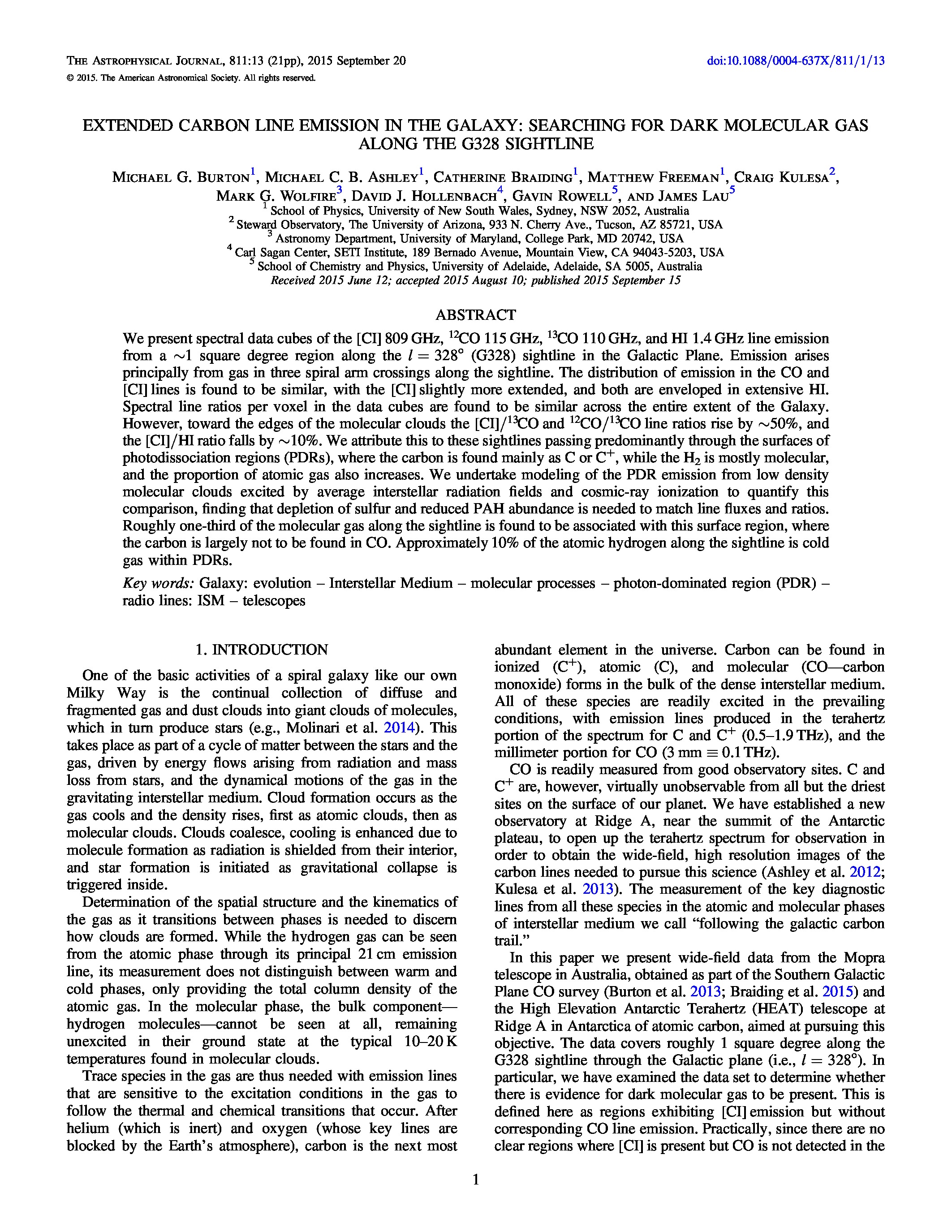EXTENDED CARBON LINE EMISSION IN THE GALAXY: SEARCHING FOR DARK MOLECULAR GAS ALONG THE G328 SIGHTLINE
Affiliation
School of Physics, University of New South Wales, Sydney, Australia
Main category
Natural Sciences (Astrophysics and Astrononmy)
Abstract
We present spectral data cubes of the [CI] 809 GHz, 12CO 115 GHz, 13CO 110 GHz, and HI 1.4 GHz line emission from a ∼1 square degree region along the l = 328 (G328) sightline in the Galactic Plane. Emission arises principally from gas in three spiral arm crossings along the sightline. The distribution of emission in the CO and [CI] lines is found to be similar, with the [CI] slightly more extended, and both are enveloped in extensive HI. Spectral line ratios per voxel in the data cubes are found to be similar across the entire extent of the Galaxy. However, toward the edges of the molecular clouds the [CI]/13CO and 12CO/13CO line ratios rise by ∼50%, and the [CI]/HI ratio falls by ∼10%. We attribute this to these sightlines passing predominantly through the surfaces of photodissociation regions (PDRs), where the carbon is found mainly as C or C+, while the H2 is mostly molecular, and the proportion of atomic gas also increases. We undertake modeling of the PDR emission from low density molecular clouds excited by average interstellar radiation fields and cosmic-ray ionization to quantify this comparison, finding that depletion of sulfur and reduced PAH abundance is needed to match line fluxes and ratios. Roughly one-third of the molecular gas along the sightline is found to be associated with this surface region, where the carbon is largely not to be found in CO. Approximately 10% of the atomic hydrogen along the sightline is cold gas within PDRs.
Do you have problems viewing the pdf-file? Download paper
here
If the paper contains inappropriate content, please
report the paper. You will be redirected to the landing page.
